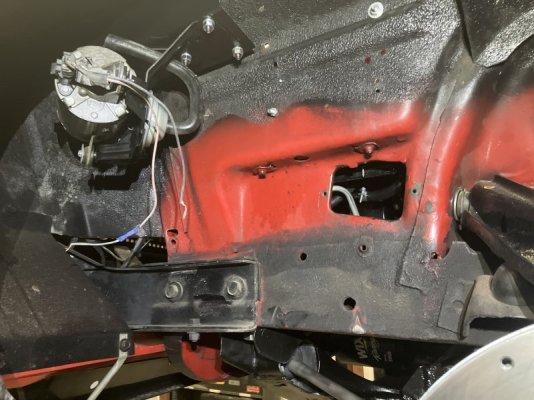- Local time
- 12:09 PM
- Joined
- Apr 13, 2012
- Messages
- 40,732
- Reaction score
- 152,313
- Location
- Granite Bay CA
Those seal the reservoir to the pump. These stud/bolts thread through them.

I wish FBBO would add a LOL or Haha meme

I’m no brake expert, but I think you may need to look at the volume of fluid needed by your calipers. The master cylinder piston needs to have the capacity to displace enough fluid.Here we go again. Admitting defeat sucks but it is the way that some lessons are learned best.
I tested this pump:
View attachment 1376743
View attachment 1376744
It made 22” of vacuum.
Of course I had to clean it. In doing so most of the gold anodizing came off. I went ahead and clear coated it.
View attachment 1376746View attachment 1376747
The bracket was cleaned and painted satin black. It is almost silly to refinish this pump since it will sit in “harms way” inside the left front wheel well behind the headlights. I mounted this very pump there before. I might make some shield to protect it from road debris, small rocks and such.
When running, it isn’t very loud. It surely gets drowned out by the sounds of the engine.
In the past, I’ve used this iron master cylinder, sized 15/16”.
View attachment 1376749
It worked but was heavy. It also isn’t really right for a 4 wheel disc arrangement.
I have this one leftover from the hydroboost effort:View attachment 1376748
It is 1 1/8”. Aluminum with a big reservoir. This should provide adequate pressure for a vacuum boosted setup.
From what I’ve read, going to a larger bore master cylinder will result in shorter pedal travel before brake engagement but a firmer pedal.
I will find out.
View attachment 1376734
The last arrangement I had was with large 2.75” front calipers and a 15/16” master cylinder. This one is with twin 1.59” pistons in the front calipers and this 1 1/8” MC. The new calipers have less surface area but will have more fluid volume to move them.I’m no brake expert, but I think you may need to look at the volume of fluid needed by your calipers.


| RAYBESTOS MC39178 Specifications | |
|---|---|
| Number of Ports | 2 |
| Primary Port Thread A | 1/2"-20 |
| Secondary Port Thread A | 9/16"-20 |
